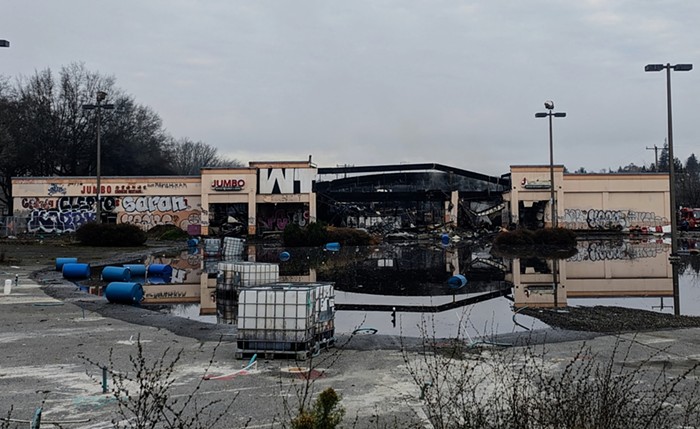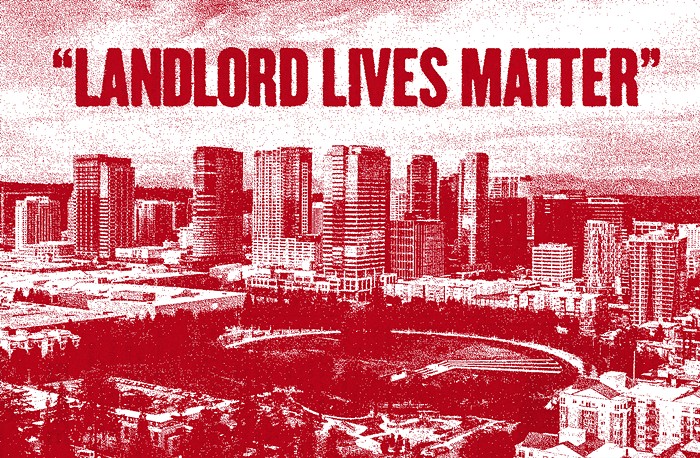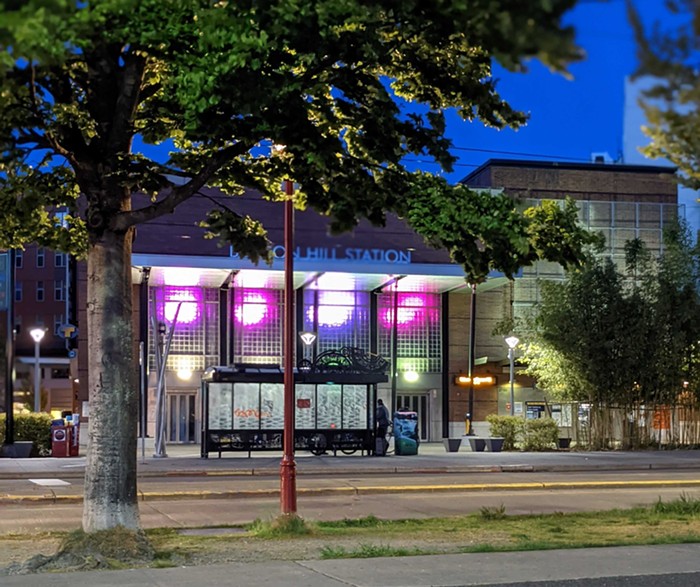Joy Hollingsworth's response to Hannah Krieg's post "Joy Hollingsworth Tried to Stop New Apartment Construction on Madison in 2017" certainly makes great points, but it fails to directly answer the key fact Krieg presented:
...in a 2017 letter, which Hollingsworth wrote as the property manager for three neighboring lots that her relatives own, Hollingsworth did not mention gentrification or displacement. Instead, she complained that new buildings obstructed her view of Bellevue and Lake Washington and deprived her of natural light.
Hollingsworth's assessment of urbanism and its inherent limits are, however, right on the mark. Urbanists tend to be white and present market-driven development as the only path to the kind of density that reduces our dependency on cars and the fossil fuels they consume. But does Hollingsworth provide a viable alternative to the white urbanists who, in her view, are wanting in intersectional and respectful modes of thinking? Not really. Indeed, there is still greater similarity between Hollingsworth and standard-issue urbanists, than between her and the council member she hopes to replace, Kshama Sawant. Because the latter is unapologetically a socialist, she can recognize decommodification as the most rational (if not the only) way out of a crisis caused by unchecked value inflation in the housing market.
But what I want to address in this post is a key but almost unrecognized feature of gentrification. If we have this understanding, the answer to the question, "Can a Black person be a NIMBY?" will, I believe, be in reach.
Sound on! 🔊🔊🔊
— Black Legacy Homeowners (@blacklegacyhome) September 24, 2023
Thank you to Josephine Howell for our amazing Theme Song!! We shall NOT be Moved!! #WeAreStillHere#BlackLegacyHomeowners#WeShallNotBeMoved #BlackInSeattle pic.twitter.com/CCzZnmkGpp
As I pointed out in an earlier post "White People Don't Need Safe Seattle; Black People Need Black Legacy Homeowners Network," the push to preserve and expand Black homeownership finds its economic reasoning (and legitimacy) in the fact that the middle class' primary source to wealth outside wages is the exchange value (rather than use) of a house. Access to this rudimentary financial asset was available, for the most part, to white Americans, particularly after the Second World War. And this opportunity resulted in their mass exodus to the suburbs from an inner city characterized, since the 18th century (the birth of the industrial city), by the concentration of poverty. The US government basically abandoned post-war Black America in an urban core that all manner of market-friendly urban planning had failed to improve: New Liberalism, the garden city movement, the progressive movement, and so on.
What can never be repeated enough is that the market can't house the poor. It never has; it never will. The fact that almost all of the development in 21st-century Seattle has been devoted to luxury towers and the like is not an anomaly. It is consistent with a form of social organization that has endless growth as its lifeblood, its conatus, its raison d'etre. If the state does not provide housing directly or indirectly, then you, if you're poor, have to live in a slum, if you are lucky; or live on the streets, if you are unlucky. That's it.
During the Great Depression, this fact could not be avoided, and so the US government decided to intervene in two ways: social housing and increasing access to homeownership by backing long-term loans (the market could only provide short-term loans). After the war, the US, through political pressure from the construction sector, directed the bulk of its public investments at affordable (white) homeownership (the 30-year mortgage). Social housing, the second option, which had a promising start in the 1940s—and took off in Europe, particularly Vienna—was demonized, gradually abandoned, and eventually demolished. There was no growth potential in apartments priced far below the market rate.
Black homeownership, which was locked in specific neighborhoods, as Hollingsworth correctly points out (redlining), occurred in neighborhoods with little to no public and private investment. The Central District was, for example, a food desert. Supermarkets were found only on its edges. Capital deflation and the government's policy of indifference meant homeownership in this and similar American neighborhoods was dominated by use-value. The return of white homeowners to the urban core was, in part, a consequence of a popular recoding of the inner city initiated by Jane Jacobs. After she, a writer for an architectural journal, defeated, in the 1960s, a major and destructive plan by the car-centric urban planner Robert Moses, urbanism was born. By the 1980s, walkability and density were entirely recoded. They become virtues.
The Central District fit the urbanist bill, and so was gentrified in just a decade (1990 to 2000). Black churches closed. Blacks were displaced. And those who were lucky enough to own a home had to face skyrocketing property taxes. But the strange thing in all of this is the true nature of gentrification. It is very new and owes its entire existence to state/government support. There was no gentrification before the Second World War. It was not there in the whole of the 19th century—although the French poet Charles Baudelaire shows glimmers of it in Haussmann's Paris. It makes its appearance only when the government commits gigantic amounts of public funds to what can only be described, in the American context, as white affirmative action. (Economists described this development as the creation of an effective demand that, for a period, solved the overproduction and underconsumption crisis that characterized the Great Depression).
Black homeowners and renters in the CD and other hoods were bulldozed by white homeowners who greatly benefitted from state-backed housing policies. This is the actual source of their form of (exchange value) wealth outside of the wage. Black Legacy Homeowners are fighting for just a piece of this pie, but with nothing like state funds lavished almost solely on white homeowners between 1947 and the savings and loans crisis of the 1980s. (The half-hearted effort to extend homeownership to POCs resulted in a conflagration of greed that consumed every market in the world in 1987.)
The process of gentrification could not start without a serious amount of government cheese—the likes of which Black communities have never seen. Gentrification has nothing to do with market forces or logic or the invisible hand. It's the result of state capitalism—or, better yet, the government's social control and maintenance of capitalist class forms. As for the question: "Can a Black person be a NIMBY?" At this point, you must see it is unimportant, if not entirely irrelevant.




















